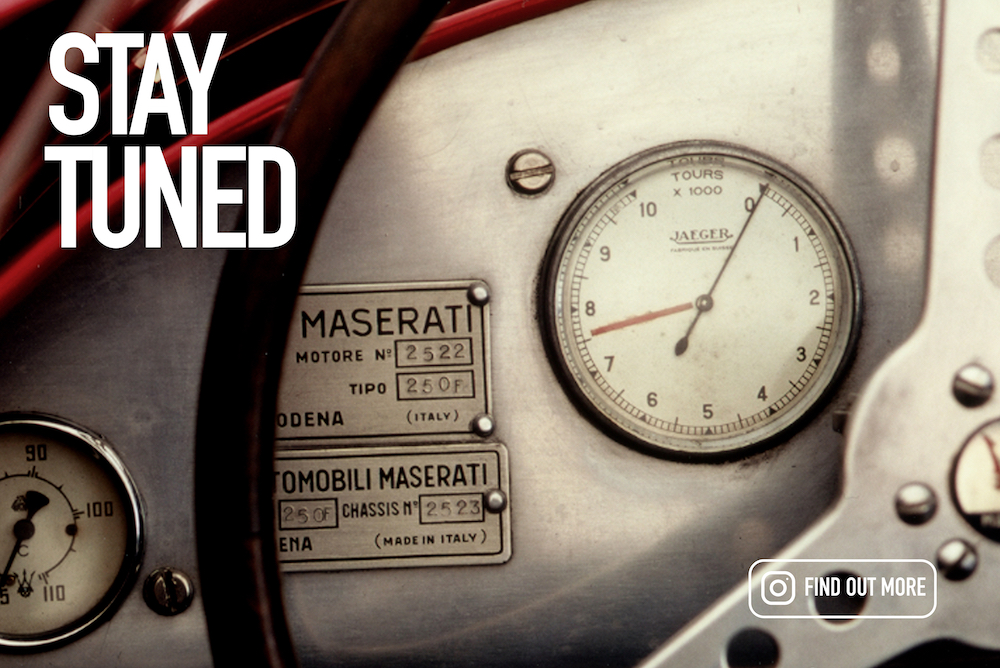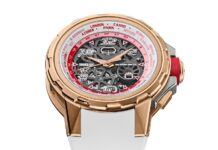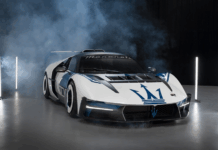Regardless of taste, it would be tough to look a (prancing) gift horse in the mouth should a classic Ferrari materialize in one’s garage. I mean, who could decline the joys of bright-red ’60s curves, a 12-cylinder engine, and supple Italian leather? A GTO, GTB, or SWB lives rent-free in the fantasies of many car enthusiasts, but they remain just that—fantasies. The reality is that any Enzo-era Ferrari worth having costs at least as much as a pretty nice house, and plenty more are worth mansion money.
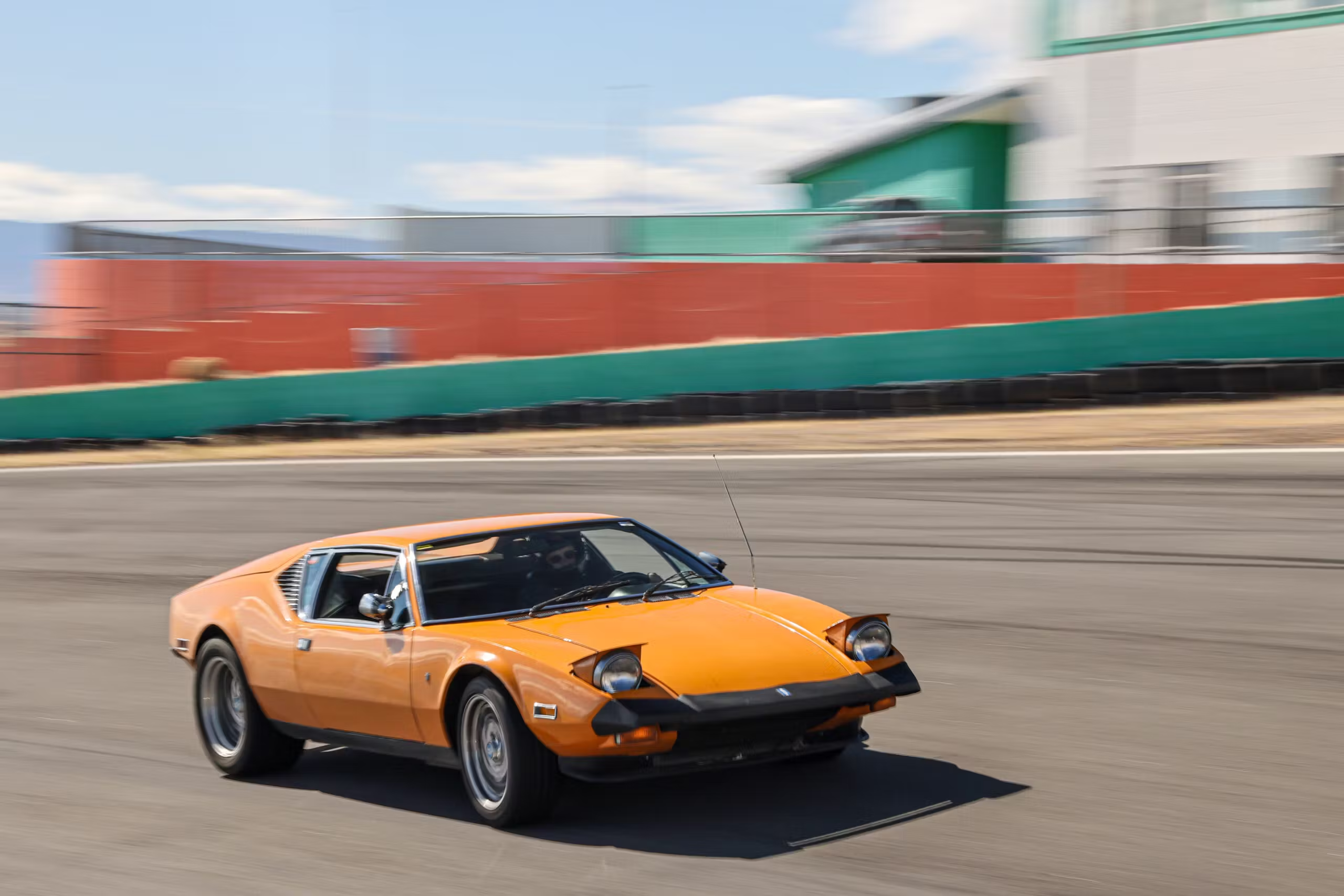
For the more budget-constricted and value-minded fantasy stable, alternatives abound. At the same time Ferrari was building many of its greatest hits—particularly the 1960s—there were other upstarts in Italy building handsome sports cars and gran turismos with mega power. They were, however, not powered by finicky V-12s covered in camshafts but by pushrod V-8s from Michigan. Some of these Italo-American hybrids—like the Iso Grifo and Bizzarrini—are expensive in their own right, but many remain obscure and are worth a fraction of the equivalent Ferrari… even though they are far from a fraction of the car.
Below are five such choices that offer Ferrari-ish looks and performance at a much lower cost.
1966-72 Intermeccanica Italia
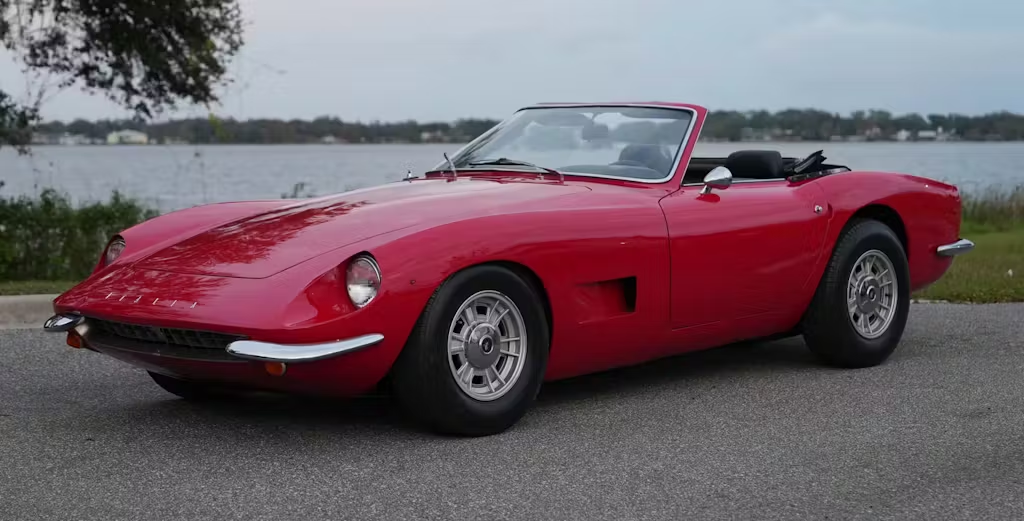
The history of Intermeccanica is a bit convoluted, but it’s fascinating. The short version is that it was a truly international affair, founded by Frank Reisner (a Hungarian-born Canadian immigrant) and Paula Reisner (his Czech-born Canadian wife). They fell in love with the city of Turin and set up a company there, called Costruzione Automobili Intermecanica, in 1959. At first they sold tuning parts and performance kits for mostly French cars but soon started building cars for clients like Apollo (more on that in a second). Odd jobs included converting a 1965 Mustang into a station wagon for a U.S. advertising company, and constructing Corvair-based Fitch Phoenix for racer John Fitch.
But Intermeccanica also built its own cars, wearing a badge that looks oddly half Ferrari horse and half Lamborghini bull (it’s called the “prancing bull”). Eventually, the Reisners moved back across the Atlantic; the family-run company appears to still exist as of a few years ago, building high-quality Porsche 356 replicas in British Columbia.
The Intermeccanica Italia came about early in the company’s history. It contracted with Long Island dealer Jack Griffith to build a V-8-powered sports car in 1965, but the project was short-lived and the Reisners wound up with full rights to the car. They ran through a couple of different names on early examples, but settled on “Italia” once production was underway. The long hood, scooped headlights, and pert tail looked like something out of Modena, but under the hood there was the galloping heart of a Ford Mustang. Early ones used Ford’s 289cid/271hp V-8, but production soon switched to the 302 with 250 hp. A period ad for the Italia called it “The Best of Two Continents.” It was pricey at around eight grand, but it had a decent run with about 400 coupes and convertibles built up to 1972.
Although one Italia did sell for $232,500 last summer, Italias are generally much less expensive. The current condition #2 (“excellent”) value in the Hagerty Price Guide runs from $96K to $105K for the coupe, and $141K to $147K for the convertible. Not chump change, but any Ferrari spyder from this period is going to be a seven-figure car. If the Italia looks like any one Ferrari in particular, it’s the 275 built around the same time. The cheapest 275 GTB in our guide is $2M in #2 condition. The 275 NART Spyder is worth $21.5M.
1962-65 Apollo GT
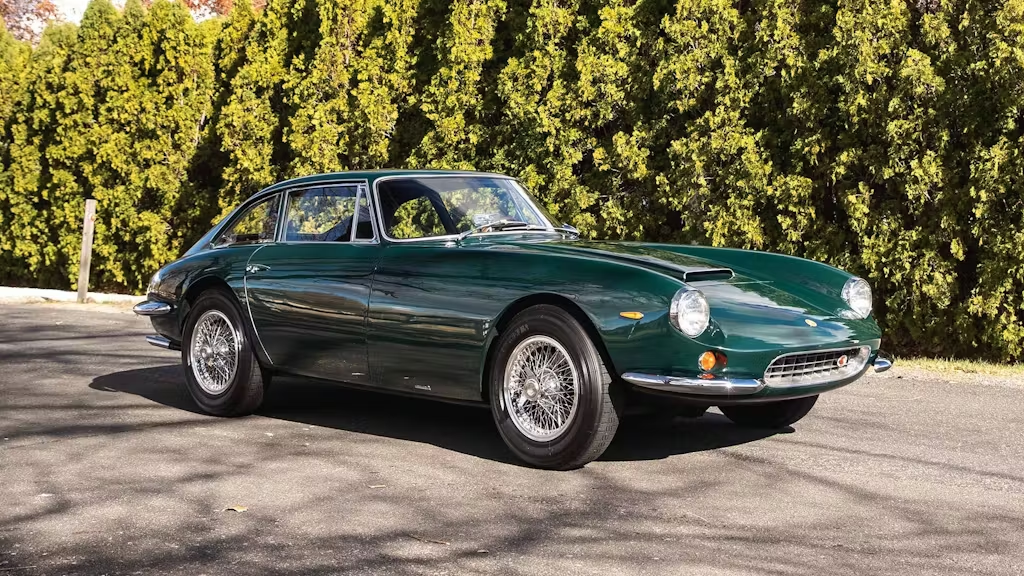
In 1963, before the Italia, Intermeccanica worked with an Oakland, California outlet called Apollo. It was the brainchild of three friends who wanted to emulate the best large performance cars coming out of Italy and Britain, but with more reliable American underpinnings. One of them sketched out a European-influenced coupe body, and Italian designer Franco Scaglione further refined the shape. Apollo hired Intermeccanica to build the bodies, designed a steel ladder frame in-house, and fitted Buick suspension.
Power came from Buick, too, specifically its then-new aluminum 3.5-liter V-8. Intermeccanica shipped the bodies to Oakland, where final assembly took place. At $7000, the Apollo 3500 GT was more expensive than an E-Type Jag but still decent value for its looks and performance. Demand was strong enough that Apollo introduced a 5000 GT, which utilized Buick’s iron-block, aluminum-head 5.0-liter V-8. But, as is so often the case with small sports car companies, lack of capital and cash flow put Apollo in an early grave after it sold just 88 GT coupes and convertibles.
Given their rarity, Apollos don’t pop up for sale often, but the current condition #2 value for a 3500 GT coupe is $131K, and for a convertible it’s $188K. For the 5000 GT, it’s $160K for a coupe and $197K for a convertible. In terms of looks, era, and performance, the closest Ferrari is probably the 250 GT Lusso, which is a $1.45M car these days.
1963-70 Iso Rivolta
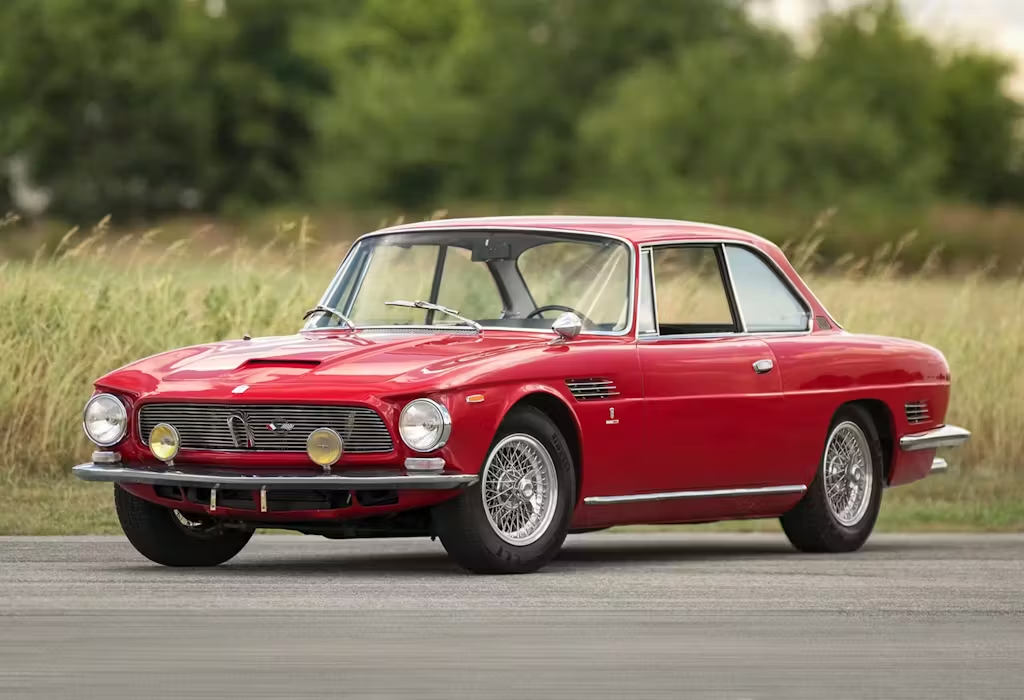
By the 1960s, Renzo Rivolta’s firm had built scooters, motorcycles, and even the original Isetta microcar, but he also sensed a growing demand for expensive GT cars that weren’t as temperamental as the ones available at the time.
Inspired by the British-built, Italian-styled, American-powered Gordon-Keeble, he hired ace engineer Giotto Bizzarrini to build him something similar, but better. Bizzarrini designed a pressed steel platform chassis from scratch, welded to a 2+2 coupe body penned by a young Giorgetto Giugiaro at Bertone and powered by a 327-cubic-inch V-8 lifted from the Corvette.
This new Iso Rivolta was “the car we have all been looking for,” said Road & Track. Initial models came with a 300-hp version of the Chevy small-block, and a 340-hp version joined the lineup in 1964. Iso Rivoltas came with either a four-speed manual, five-speed manual, or three-speed automatic. About 800 were built in total.
Today, a Rivolta IR 300 (the 300-hp version) is worth $120K in #2 condition, while the IR 340 (the 340-hp version) is worth $133K. As a four-seater, it compares with some of the less valuable Enzo-era Ferraris (2+2 equals less valuable in Maranello math), but it’s still a lot more affordable. Relatively speaking, anyway: A Ferrari 250 GTE from the same era is nearly $400K at current #2 values, while a 330 GT 2+2 ranges from $255K-$280K and a 365 GT from $225K-$250K.
1966-67 Ghia 450SS
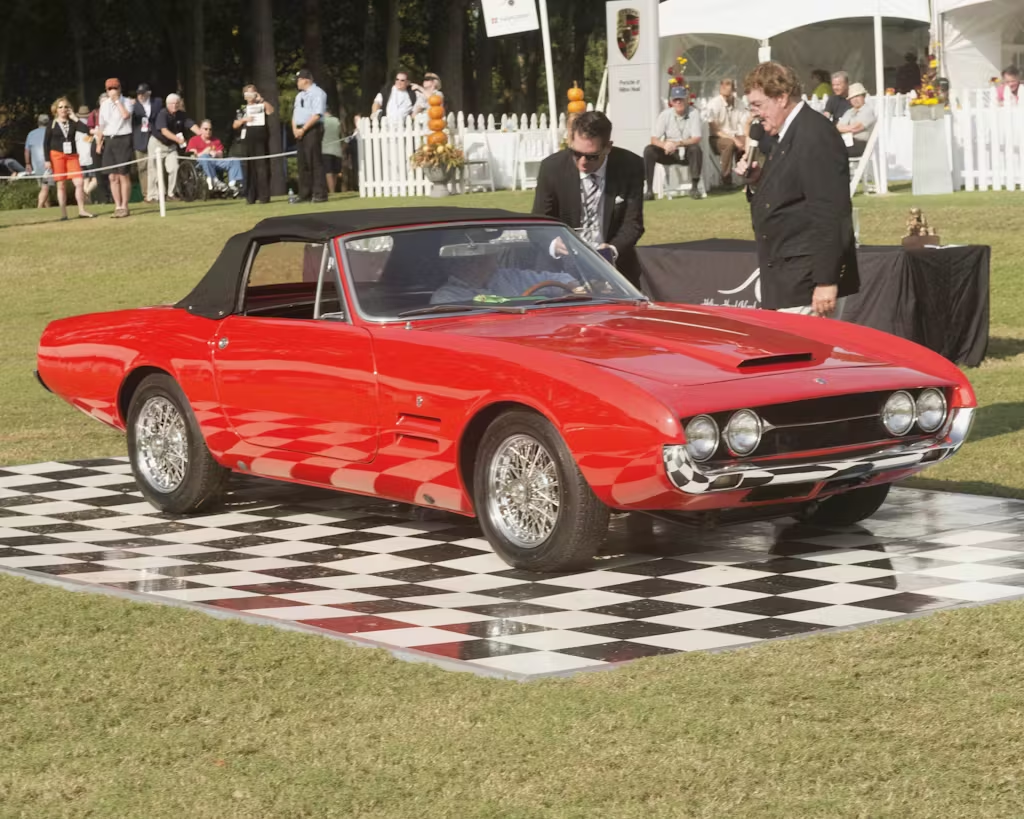
One of the lesser-known American-powered Italians is the Ghia 450SS, conceived by film/TV producer Burt Sugarman. He contracted with Ghia and Chrysler, who already had a history of working together, on a svelte two-seater that made heavy use of Plymouth parts, including the 273-cu-in (4.5-liter) Commando V-8. Chrysler sent Barracuda Formula S drivetrains across the Atlantic to Ghia, which mated them to a hand-built steel chassis and welded the body to the frame. The whole package had a shorter wheelbase than the Barracuda and was both shorter and lower overall, but was still no lightweight at over 3000 pounds.
The cars then went to California, where Sugarman sold the cars at his Beverly Hills dealership. Even in that celebrity enclave, though, the Ghia 450SS was a tough sell. Asking price was about twice as much as a Corvette, or roughly as much as a Ferrari. Just 57 are thought to have been built.
The 450SS doesn’t bear much of a resemblance to any contemporary Ferrari, but the Italian personality is clear both inside and out despite all the Chrysler/Plymouth hardware. It is currently worth $162,000 in #2 condition in our price guide, and the last one to sell brought $137,200 two years ago. Any comparable Ferrari from the mid-to-late-1960s is going to be worth several times as much.
1970-92 De Tomaso Pantera
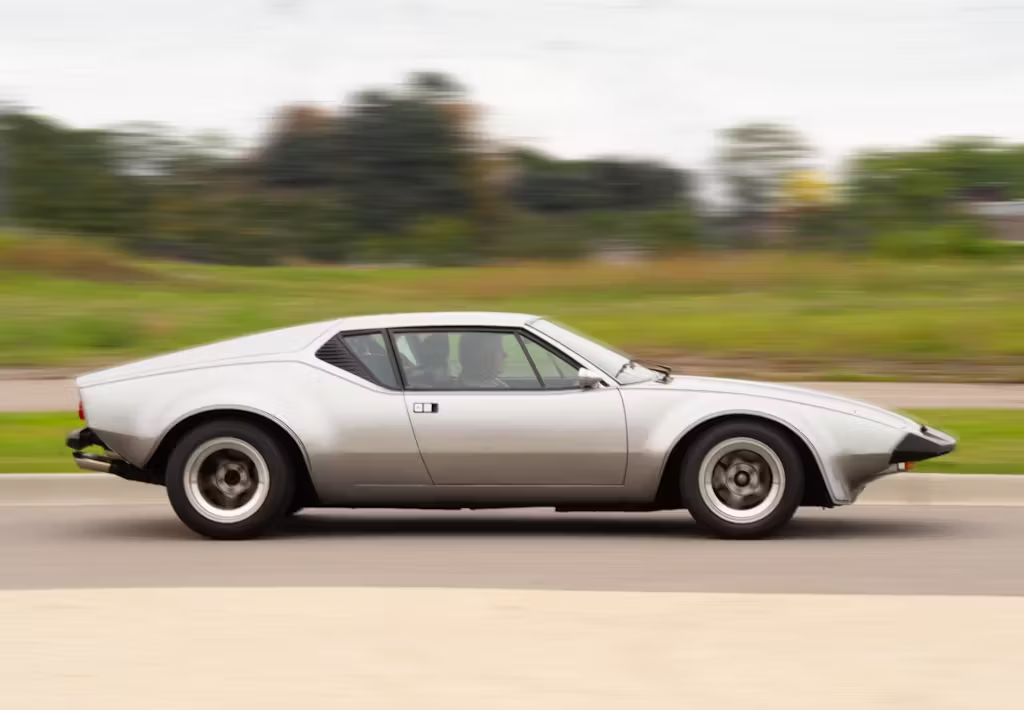
While the Ghia above is one of the obscure American-powered Italian cars, the Pantera is probably the best-known one. It was actively marketed and sold in this country, at Lincoln-Mercury dealers no less.
Argentine Alejandro de Tomaso moved to Italy in the 1950s and started his namesake firm in Modena in 1959. The company’s first road car was the Ford four-cylinder-powered Vallelunga in 1963, followed shortly by the Ford V-8-powered Mangusta in 1966. While the Mangusta looked spectacular and had plenty of power, its backbone chassis was problematic and led to unpredictable handling. Its monocoque Pantera replacement was already underway when DeTomaso inked a deal with Ford Motor Company to market and sell it in the States.
The Pantera’s wedge styling was the work of Tom Tjaarda at Ghia, and behind the driver sat Ford’s 351 Cleveland V-8. Between the seats was a Ferrari-style open-gate shifter for the ZF five-speed.
The Pantera went on sale for American buyers in late 1971. It went through minor changes and added both an L (luxury) and GTS to the lineup before Ford ceased imports in 1975, after about 5500 units sold. De Tomaso kept building and improving the Pantera up until the 1990s, and a few of these later European-market Panteras made it here via the gray market.
Today, Pantera values vary by year and spec, but most are worth about $100,000, and the GTS is worth $125K in #2 condition. A few, like the end-of-the-line Pantera 90 Si from the ’90s or the racy Pantera GT5-S from the ’80s, have sold for over $200K or even $300K. But most of these cars sell for well under $200K.
In the Ferrari world, the Pantera’s most direct competitor was the Berlinetta Boxer (BB) series that included the 365 GT4 BB and the 512 BB/BBi. The 365 is worth nearly half a million dollars in #2 condition today, while the 512 ranges from $280K to $310K. If we look at the world of Lamborghini wedges of this period, no version of the Countach is worth half a million, either.
Report by Andrew Newton
find more news here.
